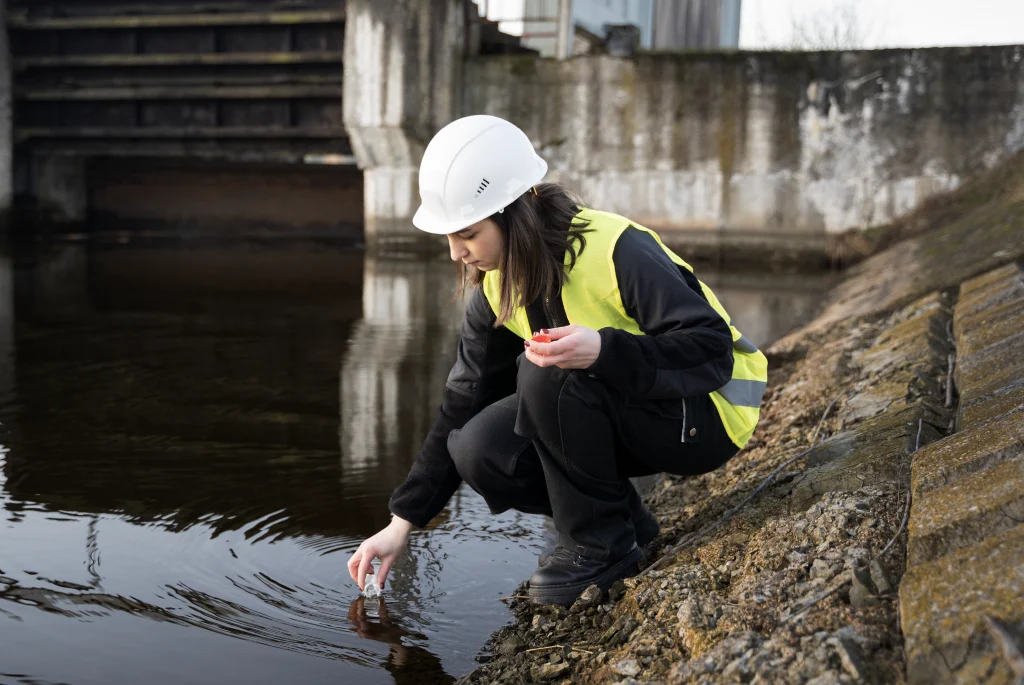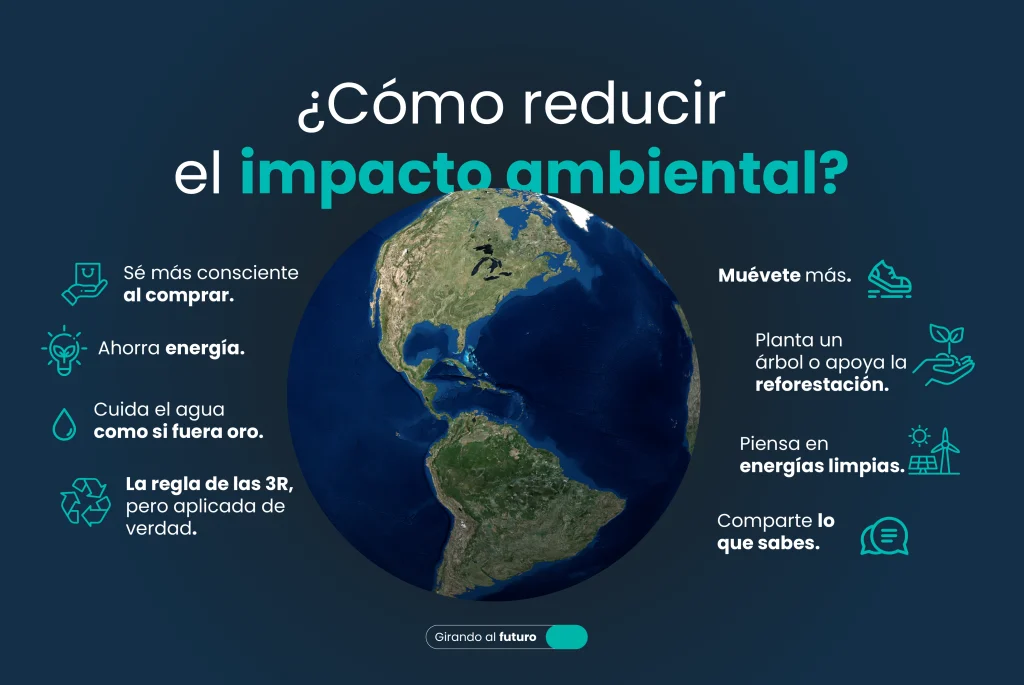
Environmental impact, the challenge of protecting our planet together
Environmental impact is any change that happens in the environment because of things that humans do or because of natural phenomena. These changes can come from things like industrialization, agriculture or urbanization. Now, the impact can be good or bad, but when we talk about the negative ones, we are referring to problems like air, water or soil pollution, and also loss of biodiversity.
Types of environmental impact
When we talk about environmental impacts, they are not all the same, and there are several ways to classify them according to where they come from and how they affect the environment. Let's take a closer look:
- Positives: Although it sounds strange, there are also good things we do for the environment. For example, planting trees in a deforested place or using technologies that reduce emissions. These are changes that, instead of harming, help ecosystems.
- Negatives: These are the ones we are most concerned about and the ones we hear the most about. They are those that damage the environment, such as air, water or soil pollution, and the destruction of natural habitats. These problems affect animals and plants as well as our quality of life.
- Direct and indirect: Here we talk about "how" things happen. Direct impacts are those that occur immediately, such as cutting down a forest to build a road. Indirect impacts are those that come later, such as the increase in traffic and pollution that the road could bring.
Each of these impacts matters, and understanding them helps us make better decisions to care for the planet.
Environmental impact assessment
The Environmental Impact Assessment, or EIA, is a very useful tool that allows us to anticipate the possible effects that a project may have on the environment before it begins. It is a preventive process, something like a check-up for projects and human activities.
What does it consist of? Before constructing a building, opening a mine or carrying out any activity that could affect nature, an analysis is made of how much impact it could generate. For example, it is evaluated whether it could pollute the air or water, harm the species living in the area or significantly alter the environment. The important thing about the EIA is that it not only identifies potential problems, but also proposes measures to minimize or prevent those impacts.

Environmental impact assessment (MIA)
The Manifestation of Environmental Impact, or MIA, is like an x-ray of the environment that companies or developers must make before starting a large project. It is a document detailing what they plan to do, how they are going to carry it out and, most importantly, how it could affect the environment.
What is it for? Basically, to make sure that projects such as building a road, opening a mine or building an industrial complex do not end up being a disaster for the environment. It is a key tool that allows authorities and communities to assess potential risks before approving them.
The MIA includes several important points:
- What is the project about? This explains what will be done, how it will be done and how long it will take.
- What are the potential impacts? Both negative and positive effects are analyzed. For example, if the project could contaminate water, affect flora and fauna, or even generate jobs in the area.
- What solutions are proposed? It is not only a matter of pointing out problems, but also of recommending measures to reduce impacts. If trees are going to be cut down, for example, a reforestation or environmental compensation plan could be included.
Once the MIA is ready, the environmental authorities review it thoroughly. They decide if the project can go ahead, if it needs adjustments or, in extreme cases, if it cannot go ahead because the damage would be too great.
The MIA is not just a formality; it is a fundamental step in finding a balance between development and environmental care. It is a way to move forward without compromising what really matters: the planet and the quality of life for all.
Causes of environmental impact
This has to do with how we use the planet's resources, often without measure. Cutting down forests for timber, extracting oil or minerals, and so on. The problem is not only using resources, but doing so in an uncontrolled manner. In the end, we end up with both renewable resources, such as trees, and non-renewable resources, such as oil.
This is a huge and super important issue. Pollution comes from everywhere, from factories that release toxic gases, sewage that reaches rivers and seas, or fertilizers and pesticides that damage soils. All of this affects the air, water and land, leaving a negative footprint that impacts us all.
Cities grow and grow, but that growth comes at a price. Every time we build a road, a building or a new subdivision, we destroy natural habitats and displace species. And the problem is that this growth is often not planned with the environment in mind.
Industry is key to the economy, but it is also one of the biggest sources of pollution. Factories generate tons of waste, from plastics and chemicals to greenhouse gases.
Consequences of environmental impact
Climate change
This is the most talked about topic, and with good reason. Temperatures are rising, the poles are melting, sea levels are rising, and this brings more intense heat waves, floods and droughts. Not only do they affect ecosystems, they also change the lives of millions of people.
Loss of biodiversity
Every time we destroy a forest or pollute a river, many species lose their home. Some manage to adapt, but many disappear. This is not only sad, it also throws ecosystems out of balance. For example, it affects processes as important as pollination or pest control, things we depend on more than we think.
Contamination everywhere
When we mistreat the land with unsustainable practices, we end up turning fertile areas into almost useless areas. This not only affects food production, but also forces many people to leave their land because they can no longer make a living from it.
Degraded soils
When we mistreat the land with unsustainable practices, we end up turning fertile areas into almost useless areas. This not only affects food production, but also forces many people to leave their land because they can no longer make a living from it.
Extreme weather events
Have you noticed that the heat and storms are getting stronger? It's no coincidence. Climate change is making these events more intense, and the most vulnerable communities are suffering the most.
Our health at risk
All this has a direct impact on us. More pollution means more respiratory illnesses, contaminated water brings infections, and extreme heat waves are a danger, especially for children and the elderly.

How to reduce the environmental impact?
Reducing your environmental impact doesn't have to be complicated or impossible. On the contrary, it's a matter of making small changes in your daily life that, little by little, add up. Here are some practical and easy ideas to get you started:
- Be more conscious when shopping: Before putting something in the cart, ask yourself if you really need it. Opt for local, seasonal and less packaged products. And if you can, support brands that are committed to caring for the planet.
- Save energy: Turn off lights when you leave a room, unplug what you're not using and switch to LED bulbs. Can you use less air conditioning or heating? Do it. Little things like these help more than you think.
- Take care of water as if it were gold: Turn off the faucet while brushing your teeth, fix those leaks you always say you're going to fix and, if you have the chance, collect rainwater to water your plants.
- The 3R rule, but really applied: Reduce what you buy, reuse everything you can (such as bags, jars, boxes) and separate your waste for recycling. Sounds basic, but many people still don't do it.
- Move greener: If you can walk or cycle, do it. Public transportation is also a good option. And if you have a car? Carpool or consider a hybrid or electric if it's within your means.
- Plant a tree or support reforestation: You don't need to go to the forest; planting in your garden or in your community also counts. Or look for projects that are dedicated to this and give them a hand.
- Think about clean energy: If you can install solar panels, great. But if not, look for energy suppliers that are committed to renewable sources or, at least, reduce your consumption.
- Share what you know: Learn about these issues, but don't stop there. Talk to your family, friends or co-workers about how they can join in. The more people who join, the better off we will be.
In the end, it's not about making it perfect, but about trying and improving little by little. Every effort counts, and together we can make a real change to take care of the planet that belongs to all of us.
Conclusion on environmental impact
Talking about environmental impact is not just about focusing on what we are doing wrong; it is an opportunity to think about how we can do better. It is not about feeling guilty for everything that happens in the world, but about recognizing that we have an important role to play and that our actions, no matter how small they may seem, can make a difference.
Change is not always easy or quick, but every effort counts. Turning off a light, separating garbage, using less plastic or walking instead of using the car may not seem like much, but if we all do our part, the impact is noticeable. The important thing is to add up, step by step, because together we can achieve much more.
In the end, this planet is our home, and we don't have a plan B. This is the time to act, to motivate each other and to show that, when we put our minds to it, we are capable of doing incredible things. The challenge is great, but it is also our chance to leave a better world for those who come after us. So how about starting today?




